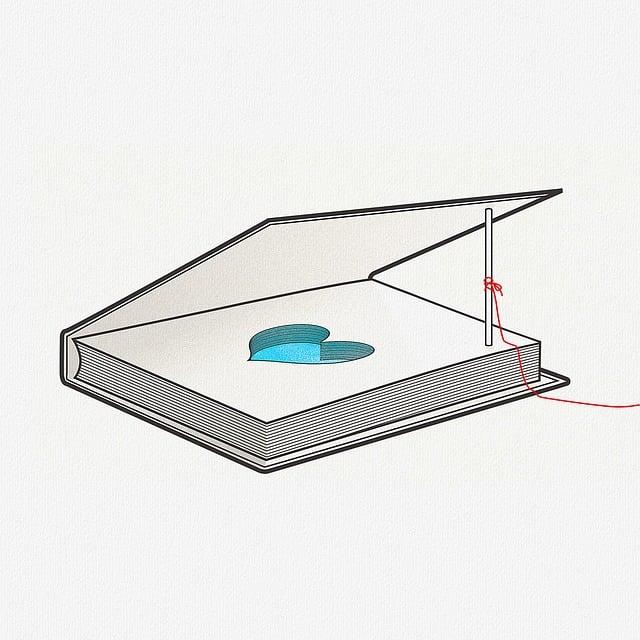Discover effective home remedies for teething puppies that provide natural relief. Say goodbye to chewing and discomfort with these tried and tested methods.
1. Understanding the Teething Process in Puppies: A Comprehensive Guide
The teething process in puppies is a natural and important stage of their development. During this time, puppies will start losing their baby teeth and growing their adult teeth. It is crucial for pet owners to understand this process to provide proper care and prevent any discomfort for their furry friends.
Here are some key points to help you understand the teething process in puppies:
1. Timing: Teething typically begins around 3-4 months of age and can last up to 7 months. Be prepared for your puppy to experience some oral discomfort and increased chewing behavior during this time.
2. Signs of teething: Look out for signs such as swollen gums, drooling, irritability, and a strong desire to chew on objects. Providing appropriate chew toys can alleviate the discomfort and redirect their chewing behavior.
3. Dental care: As the adult teeth come in, it is crucial to establish good dental hygiene habits early on. Introduce your puppy to tooth brushing using specialized dog toothpaste and toothbrush. This will help prevent dental issues and maintain a healthy oral cavity.
4. Feeding: Adjust your puppy’s diet to accommodate their developing teeth. Opt for softer or moistened food during the teething phase. Gradually introduce dry kibble as their adult teeth grow in.
Remember, the teething process is just a temporary phase, and with proper care and attention, your puppy’s new set of teeth will come in strong and healthy.
2. Identifying the Signs of Teething Pain in Your Puppy: Clues to Watch Out For
Teething is a natural process that puppies go through as they lose their baby teeth and their adult teeth start to come in. It can be a painful and uncomfortable experience for your furry friend, but by recognizing the signs, you can help alleviate their discomfort. Here are some clues to watch out for:
- Chewing and biting: Puppies may have an increased urge to chew and bite during the teething stage. This is their way of relieving the pressure in their gums. You may notice them gnawing on furniture, shoes, or even their own toys more often.
- Excessive drooling: If you find your puppy drooling more than usual, it could be a sign of teething. The increased saliva production helps lubricate the gums and soothe the irritation caused by the emerging teeth.
- Loss of appetite: Some puppies may experience a temporary loss of appetite during the teething process. The discomfort in their gums can make it difficult for them to eat or enjoy their meals. Ensuring they have access to soft and easily chewable food can help mitigate this.
Keep in mind that different puppies may exhibit varying degrees of teething discomfort. While it’s natural for them to go through this phase, it’s important to provide them with appropriate chew toys, offer gentle massages on their gums, and consult with your veterinarian if you have any concerns. Monitoring these signs will help you understand and support your puppy during their teething period.
3. Soothing Teething Discomfort Naturally: Effective Home Remedies for Your Puppy
Teething can be a challenging phase for puppies and can cause discomfort and irritability. Fortunately, there are effective home remedies that can help soothe your puppy’s teething discomfort naturally. These remedies are safe, gentle, and provide relief without the need for medications or other artificial interventions.
1. Cold Compress: Applying a cold compress to your puppy’s sore gums can help numb the area and reduce inflammation. Wrap a clean cloth or a small towel around some ice cubes and gently press it against your puppy’s gums for a few minutes. This can provide instant relief and soothe the discomfort.
2. Frozen Treats: Give your teething puppy something cool to chew on. You can freeze a wet washcloth or a dog-safe teething toy to create a soothing treat. The coldness will help alleviate pain and the chewing action will help massage the gums, promoting healthy dental development.
3. Chamomile Tea: Chamomile has natural anti-inflammatory properties and is known for its calming effects. Brew a weak chamomile tea, let it cool, and then soak a clean cloth in it. Gently wring out the excess liquid and place the cloth in the fridge for a few minutes. Once cooled, give the cloth to your puppy to chew on. The chamomile will help reduce inflammation and provide relief.
4. The Power of Frozen Treats: Chilled Delights to Ease Your Puppy’s Teething Woes
Puppies go through a challenging phase when their teeth start coming in, causing discomfort and irritation. Luckily, frozen treats can provide much-needed relief for your furry friend. Here’s why frozen treats are so effective in easing your puppy’s teething woes:
1. Soothe and numb: Chilled treats can help numb your puppy’s teething gums, providing immediate relief from pain and irritation. The cold temperature helps alleviate inflammation and soothes the sore areas, making your puppy much more comfortable.
2. Encourage healthy chewing habits: Teething puppies have an innate need to chew, and freezing treats can redirect their chewing behavior to appropriate items. By offering frozen treats specifically designed for teething pups, you can redirect their focus from furniture and shoes to a safe and enjoyable option.
3. Promote dental health: Frozen treats can also aid in promoting good dental hygiene for your puppy. As they chew on these icy delights, the texture helps to gently scrape away plaque and tartar buildup, reducing the risk of gum disease and tooth decay. Not only will your puppy find relief, but their dental health will also benefit from these chilly treats.
When it comes to frozen treats, be sure to use safe and dog-friendly ingredients. Consult your veterinarian for suggestions on homemade recipes or explore the market for commercially available options. By incorporating frozen treats into your puppy’s teething routine, you can help them navigate this uncomfortable phase with ease and ensure their overall well-being.
5. Chew Toys That Work: Finding the Perfect Teething Aid for Your Pup
One of the key elements in keeping your pup’s teething phase under control is providing them with appropriate chew toys. These toys not only provide relief to their sore gums but also help prevent destructive chewing behaviors. When choosing a chew toy for your furry friend, it’s important to consider its durability, texture, and safety. Here are some helpful tips to find the perfect teething aid for your pup:
1. Size matters: Select a chew toy that is appropriate for your pup’s size and age. Avoid toys that are too small or too large as they might pose a choking hazard or be ineffective for soothing their gums.
2. Durability is key: Look for chew toys that are made from robust materials such as rubber or nylon. They should be able to withstand your pup’s strong chewing, ensuring they last longer and don’t pose any risk of breakage or ingestion.
3. Textures and features: Opt for toys with different textures, such as ridges or bumps. These added textures can provide extra relief by massaging your pup’s gums. Additionally, some chew toys have features like treat-dispensing capabilities or dental benefits, which can further enhance their appeal and functionality.
4. Safety first: Always prioritize your pup’s safety when selecting a chew toy. Avoid toys with small parts that can be easily chewed off and swallowed. Ensure they are non-toxic and free from harmful chemicals. It’s also a good idea to supervise your pup while they are playing with a new toy to prevent any accidents.
By following these guidelines, you can find a chew toy that not only entertains your pup but also assists in their teething process. Remember, an appropriate chew toy can alleviate discomfort and keep your furry friend content and happy during this stage of their development.
6. Timeless Tricks: Age-Old Teething Remedies That Still Do the Trick
Teething can be a challenging time for both babies and parents alike. Fortunately, there are age-old teething remedies that have withstood the test of time and can still provide relief for those little pearly whites. Here are some tried-and-true tricks:
- Cooled Teething Rings: Teething rings have been a go-to solution for generations. By chilling them in the fridge (not the freezer!), the coolness can help to soothe sore gums. Be sure to choose a teething ring made from safe, BPA-free materials.
- Gum Massage: Gently massaging your baby’s gums with clean fingers can offer much-needed relief. Applying slight pressure in circular motions can help alleviate discomfort and provide a comforting sensation.
- Natural Remedies: Many parents find success in using natural remedies to ease teething woes. Chamomile tea, for example, can be brewed and cooled before applying to the gums with a clean cloth. Always consult with a healthcare professional before using any herbal remedies.
Remember, each baby is different, so it’s important to find what works best for your little one. It’s also worth mentioning that teething shouldn’t cause high fever or severe diarrhea. If your baby experiences these symptoms, it’s crucial to seek medical advice. With a bit of time and these timeless tricks, your baby will be flashing their brand new smile in no time!
7. Gently Massaging Your Puppy’s Gums: Simple Techniques for Quick Relief
Gently massaging your puppy’s gums can provide quick relief from discomfort and help promote healthy dental hygiene. Here are some simple techniques to try:
1. Finger Massage: Start by washing your hands thoroughly. Use your index or middle finger to gently massage your puppy’s gums in a circular motion for about 30 seconds. Apply light pressure, being careful not to cause any pain.
2. Cold Compress: Take a clean cloth or a piece of gauze, dampen it with cold water, and place it in the freezer for a few minutes. Once chilled, gently rub the cloth or gauze along your puppy’s gums. The cold sensation can help alleviate soreness and reduce swelling.
3. Chew Toys: Providing your puppy with appropriate chew toys can also help soothe their gums. Look for toys specifically designed for teething puppies, such as rubber or silicone ones. These toys are soft yet durable, providing a safe outlet for your puppy to chew on and relieve gum discomfort.
4. Special Teething Treats: Look for treats specifically formulated for teething puppies. These treats are often softer and gentler on their sensitive gums. Additionally, some teething treats have ingredients that can promote dental health, which is an added benefit.
Remember to readjust your techniques based on your puppy’s comfort level. If your puppy shows signs of pain or discomfort during any of these methods, it’s best to consult with a veterinarian for guidance.
8. From Cloth to Ice: Alternative Teething Remedies to Explore for Your Furry Friend
Teething can be a challenging time for both puppies and their owners. While traditional teething remedies such as cloth or chew toys may work for some dogs, exploring alternative options can provide additional relief for your furry friend. Here are a few alternative teething remedies that you might want to consider:
1. Frozen treats: Freeze a mixture of plain yogurt and mashed fruit in ice cube trays. The cold temperature will help soothe your puppy’s gums while providing a tasty treat. Remember to use only safe fruits for dogs, such as apples or bananas.
2. Frozen washcloth: Dampen a clean washcloth, twist it, and freeze it. The texture of the frozen cloth can provide soothing relief for your teething pup, and it also helps to numb the gums. Make sure to supervise your puppy while they chew on the frozen washcloth to prevent any potential hazards.
3. Natural rubber toys: Look for teething toys made from natural rubber, as they are durable and safe for your furry friend to chew on. These toys tend to provide a satisfying texture and can help massage your puppy’s gums. Additionally, some natural rubber toys can be filled with treats, which adds a fun and interactive element to alleviate teething discomfort.
Remember, every puppy is unique, so it’s important to observe your furry friend’s preferences and comfort level when trying different teething remedies. Providing a variety of options allows your puppy to choose what works best for them during this challenging phase. In conclusion, these tried and tested home remedies for teething puppies offer gentle and effective relief. Remember to provide appropriate chew toys, cold treats, and soothing substances to alleviate their discomfort. With these remedies, you can support your furry friend during their teething phase and ensure their well-being.





